36 Olives: The People of Earth Face Base
An Olive Shade Range Across 12 Depths + 3 Temperatures
An impressive and admirable pursuit - one I have pondered many times. I have sketchbook pages thick with how I would approach a thorough and inclusive olive complexion range. A pursuit like this, I’m convinced, takes an independent, passionate maker, because big business just can’t be bothered.
But we are bothered - the task of finding a complexion product that truly mimics our skin is, as we know, an infuriating task - not only in terms of finding a shade that matches but the process of decoding each individual brand’s language around it can be an additional confusing chore. What if their cool is what I know as warm? What if their light turns out to be medium? What if their idea of neutral is a saturated orange?
It’s a matrix most of us don’t have time for and it leaves many of us angry and excluded.
It’s part of my mission to showcase makeup for olive undertone skin. (*see side note on vocabulary at article end).
The People of the Earth is new to the market and generously, thoughtfully, brings us an unprecedented 36 olive shades.
Yes, you read that right, 36 olive shades.
~
(Links are not affiliated. I did request the two shades I have with the intention but not obligation to post anything, and nothing is paid by the brand)
Across 12 skin depths we have cool olive, neutral olive, and warm olive. Not only is this inclusive and effortful, it’s an actual CELEBRATION of olive skin. (and yes, there are 36 more shades across other undertones and depths, as well as shade adjusters!)
I’m delighted to showcase 2 shades for you, 5NO + 5WO.
The Face Base gel-cream complexion product arrives in magnetic pans, giving us module makeup customization freedom and the ability to house multiple shades together if you, like me and many olives, drastically fluctuate in depth through the seasons.
The pans are $33/ea usd for 7.5 g, and are described as having medium coverage and a natural finish.
You may own foundations that are in this vein, like Salt New York, Mob Beauty, and Kett Cosmetics, who all offer module foundation pans in olive or olive compatible shades.
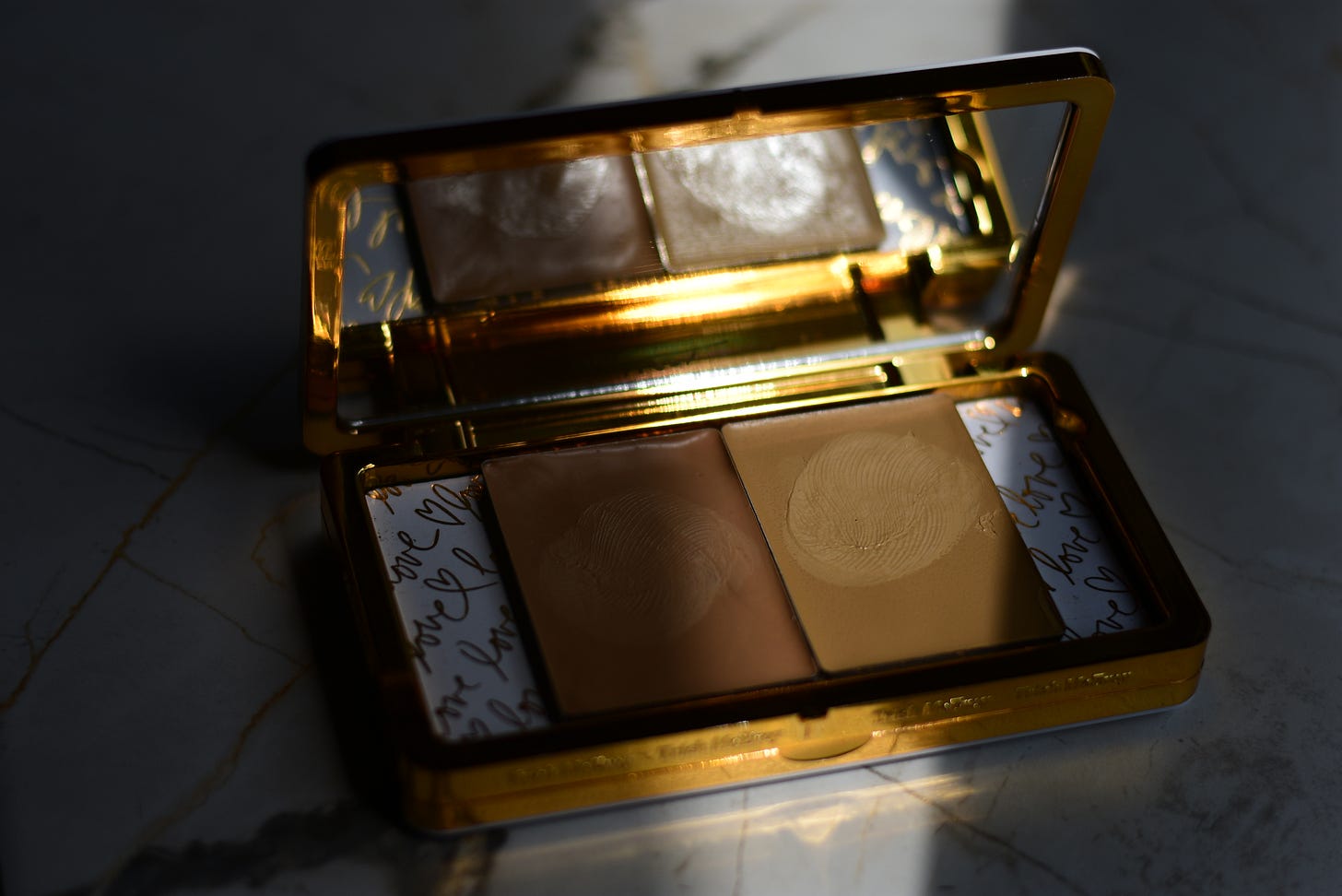
Tactile Experience / Finish
The POE face base feels creamy to the touch, with a medium viscosity and smooth textural sensation. It has soft drag while also being moveable and evenly sheer-able. I experience the texture and density to be similar to but smoother than the Mob beauty ceramide foundation. Compared to the Salt New York Sneaky Balm, it is more densely loaded with pigment, giving it a slightly more concentrated feel and appearance, while also drying down to more of a natural to matte leaning finish, almost a cream to powder character, as opposed to a natural, supple almost dewy finish that the Salt gives. In comparison to the Kett cosmetics creme foundation, it is not as dense and is less waxy, so it responds more easily to the warmth of the fingers. Kett also, to me, is slightly more pigment loaded, and requires more emollience and dilution for a natural look. There are several ingredient overlaps, but I appreciate that POE prioritizes jojoba oil before other bases, as jojoba oil (technically a liquid wax) is extremely stable, is highly compatible with and is nourishing for our skin, and creates a supple but smooth feeling upon application.
To me it feels most similar to the Rouje concealer in both texture and density, however Rouje doesn’t offer olive shades or a modular system.
Opacity
As I mentioned above, the formula is relatively pigment loaded, and while this gives the option for coverage flexibility depending on how you build it up or sheer it out, it is a quality in complexion balms/creams that I struggle with. The pigment powders (along with kaolin clay which absorbs both water and lipids) tend to concentrate themselves on both my pores and my peach fuzz, and it is a challenge for me to create a visually undetectable surface, which I prefer. I know there is a delicate balance here and there are many factors contributing to the result; skin type, skin care, primer, climate, application, and formula ratios - etcetera - so know that my experience may not be yours. I have been using it a variety of ways and on different skin care style days. I am 50 years old with normal to dry skin, and right now it’s summer and humid, though my application has been in an air conditioned environment.
Formula Compatibility
I have used it with bases of jojoba, butters, wax based balms, tallow, emulsions (water/oil creams or lotions), silicone primers, bare skin, gel bases, and bi-phase bases.
On my skin it does best with a bi-phase base. I use Merit Great Skin. This seems to offer the most compatibility between my skin and the PEO face base formula, while allowing a good glide and a natural set down. However it’s still not as skin-perfect as I prefer when I look at it close-up. From normal range and afar, it looks wonderful, and I will be continuing its use and experimentation. I’ll note that this is an overarching frustration for me. I experience this same challenge with all of my cream / balm complexion products except the SNY products. The most challenging one for me is the Mob beauty, for which I have not yet found a solution.
[sidebar. The natural formulator in me wonders if slightly reducing the kaolin clay percentage would make a difference - maybe?]
Application
I’ve had the most success so far with my fingertips - pressing not swiping - or a soft dense complexion brush like the Sonia G. or Merit foundation brushes. I have not tried a sponge, in general I’m not much of a sponge gal. If I were to use a sponge I would use it dry, so as not to break up the anhydrous formula by introducing water.
While I do think the formula balance could use some tinkering with to bring it to a truly skin - mimicking finish, I still find it exemplary in many ways.
Hue Compatibility
The shades are comprehensive, and while it’s maybe not an industry first - it’s close! And more well done. Olive shade ranges (see previous entry on olive shades from a variety of brands) have been done, but always have a gap of some sort. Even the best of the best gives us maybe 8 or 9 options, with rarely a nod to temperature or saturation. Here in the POE range, we have all of that, plus shade adjusters to address saturation or further needs.
On me, 5 neutral olive and 5 warm olive are both easily useable. 5NO is an excellent match for most of my face, becoming completely native to my coloring, while 5WO contains more yellow and is better for brightening or color correcting, but also blends to be quite natural one me. I have used 5WO more for concealer, as well as used them both blended as desired. The shades may take some devoted observation to learn your best depth level, as they don’t really correspond to your average number system for depths in common brands, which honestly is refreshing. Take your time looking at swatches or requesting assistance at hello@thepeopleofearthco.com.
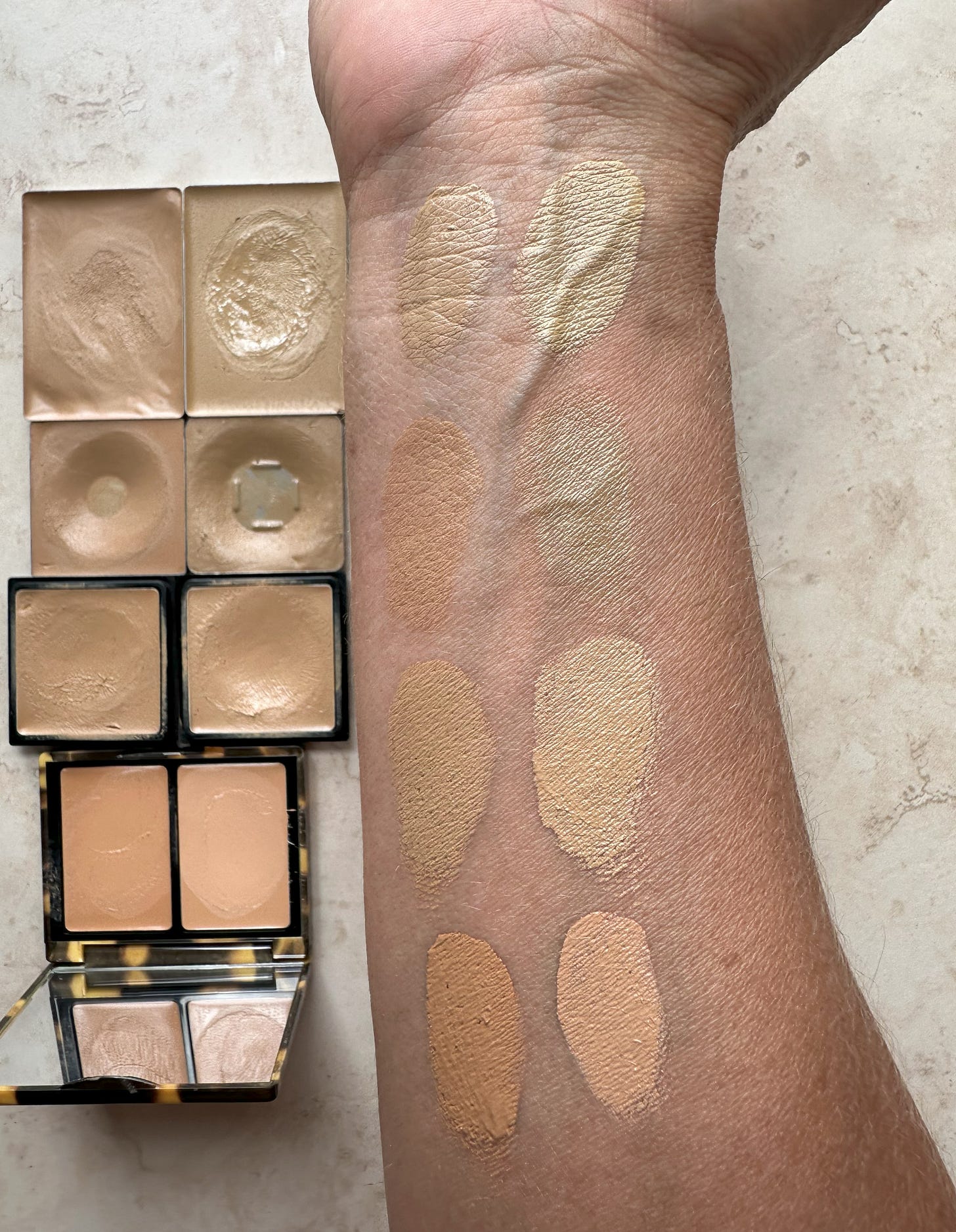
My skin is medium, neutral to warm leaning olive, and my saturation/clarity level according to color analysts is medium. Normally I would look for my shade in numbers 3 or 4 in a commercial product range, but here my spring shade is 5, and now that it’s summer I would need a 6. For another reference I am 16 + 17 in Lisa Eldridge Seamless Skin foundation and 9/10 in her Tint, and in Chanel Les Beiges I am 5O53 much of the year.
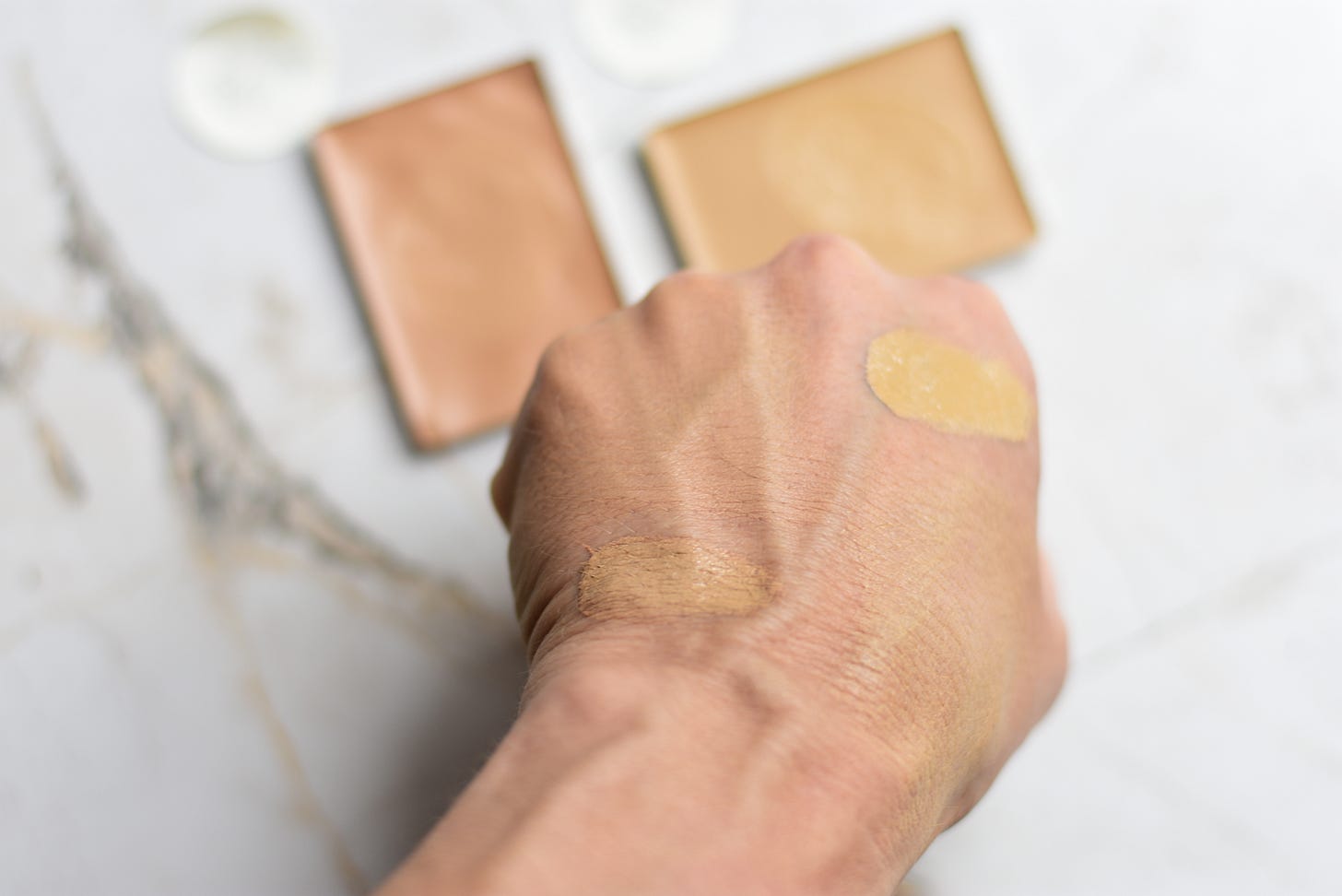

In summation…
what POE brings us is care and attention to our collective cry for shade inclusivity and nuance. It’s an honor to test and enjoy the Face Base, and I will both use it and be watching for its bright future! I think many of you will enjoy it, especially if you love a cream/balm foundation with flexible coverage and a natural finish.
If there’s a quality I didn’t mention, please ask! I’ll do my best to add on. If you’ve tried it, please add your experience, as we will all benefit.
xo
mo
~~
The People of Earth Additional Details:
https://thepeopleofearthco.com/
- South Asian Woman owned
- Independent brand
- 72 shades across depths and undertone (cool, neutral, warm, cool olive, neutral olive, warm olive)
- 5 shade adjusters: black, white, red, yellow, green
~~
Thank you, Preeti, for giving me the honor and opportunity to learn about your Face Base!
~~
* Note on vocabulary: I use the term “undertone” to mean the specific hue of the skin. There are many strong opinions on the terms undertone, tone, overtone, root hue, etc and exactly what they all mean or even if they exist.
My goal is effective communication, not conflict, so I want to clarify that I choose to use the term “undertone” to reference a person’s skin hue, which is a root color that presents as a color and temperature that is seen visually and is created by the skin’s melanin ratios. My definition of “undertone” does not refer to a skin’s “overtone” which in my vocabulary refers to transient influences like rosacea, acne, melasma, freckles, hives, or other circumstantial expressions that can come go and are seen on the surface of one’s skin that are not created by melanin. My definition of “undertone” also does not refer to skin’s depth; how light or dark it is.




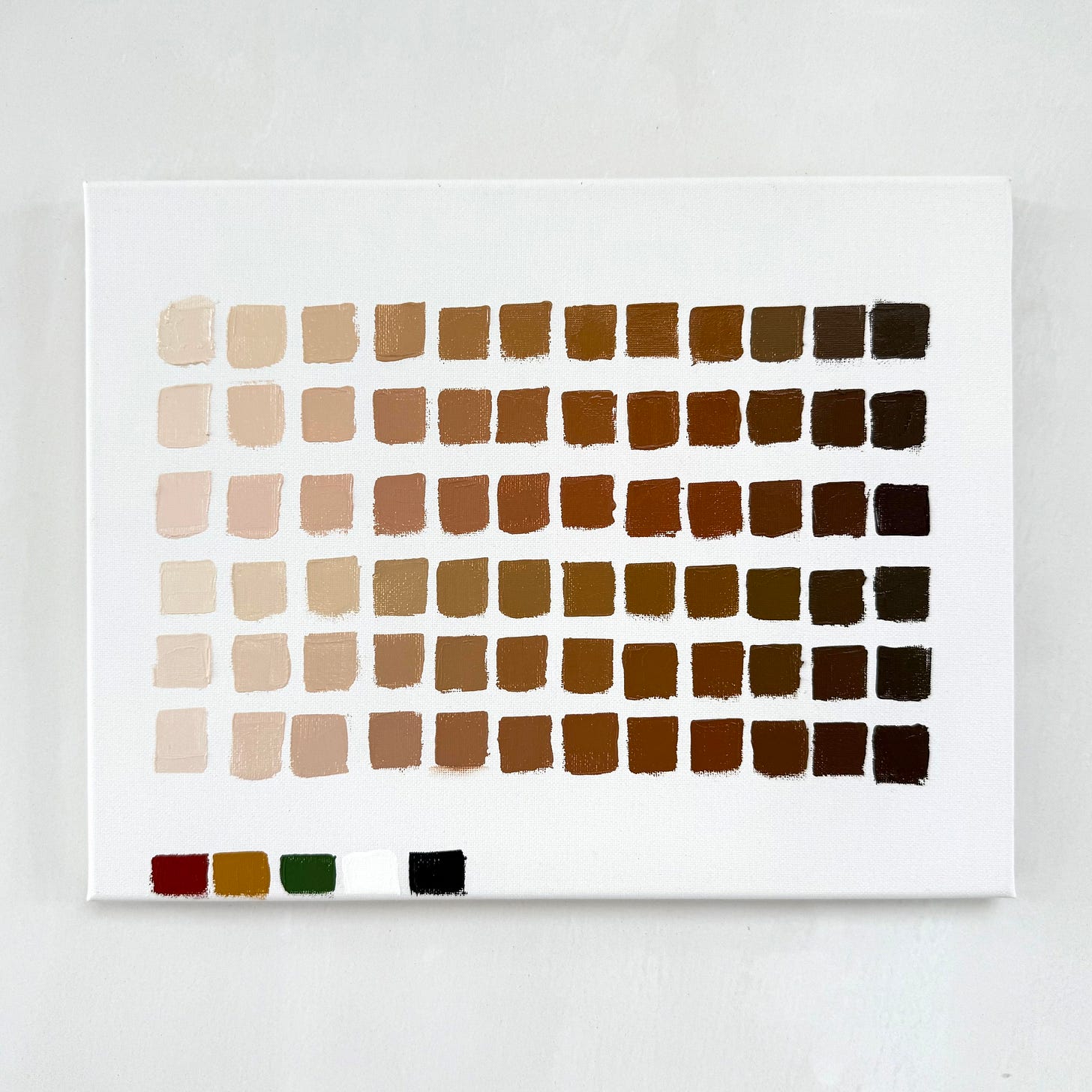
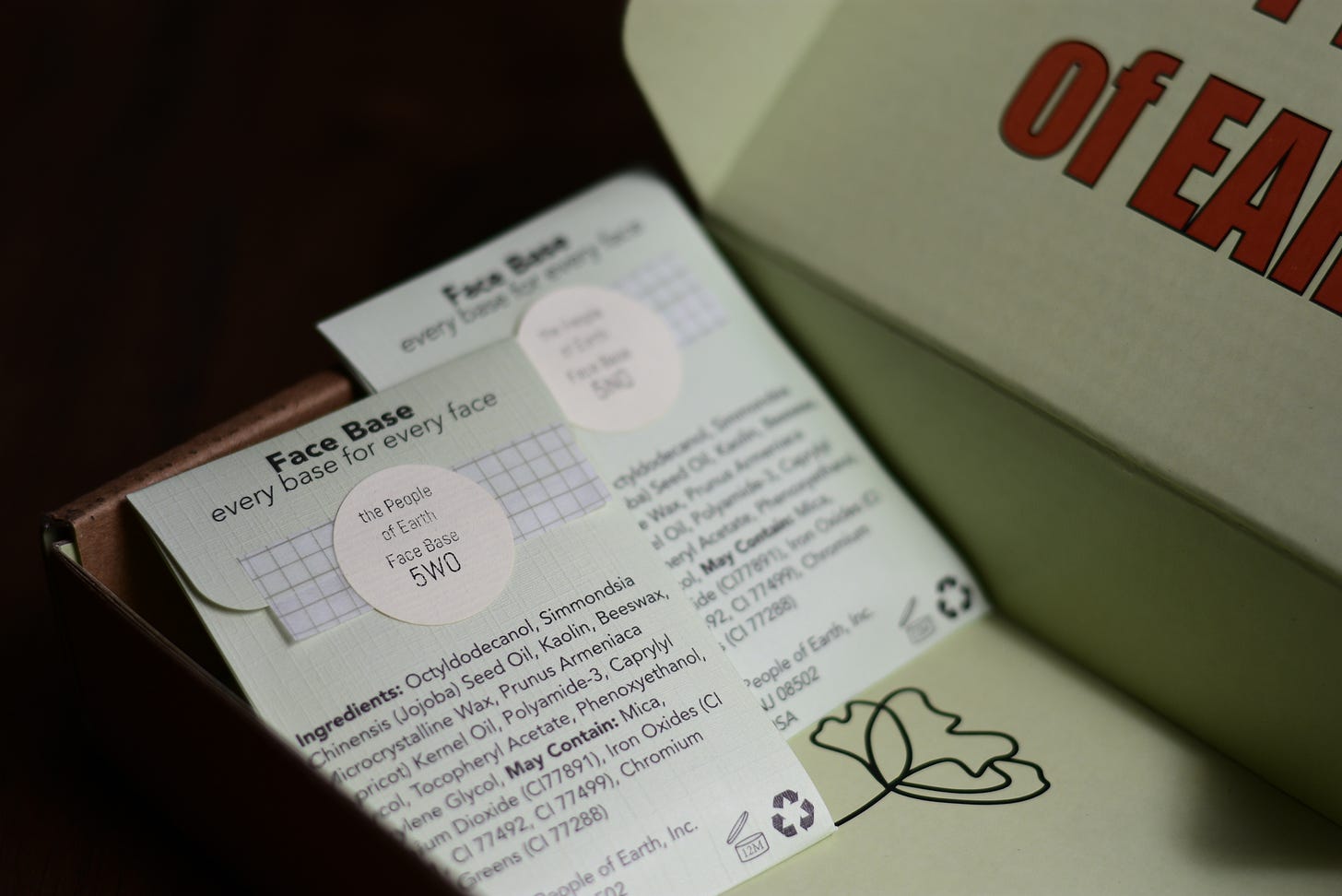
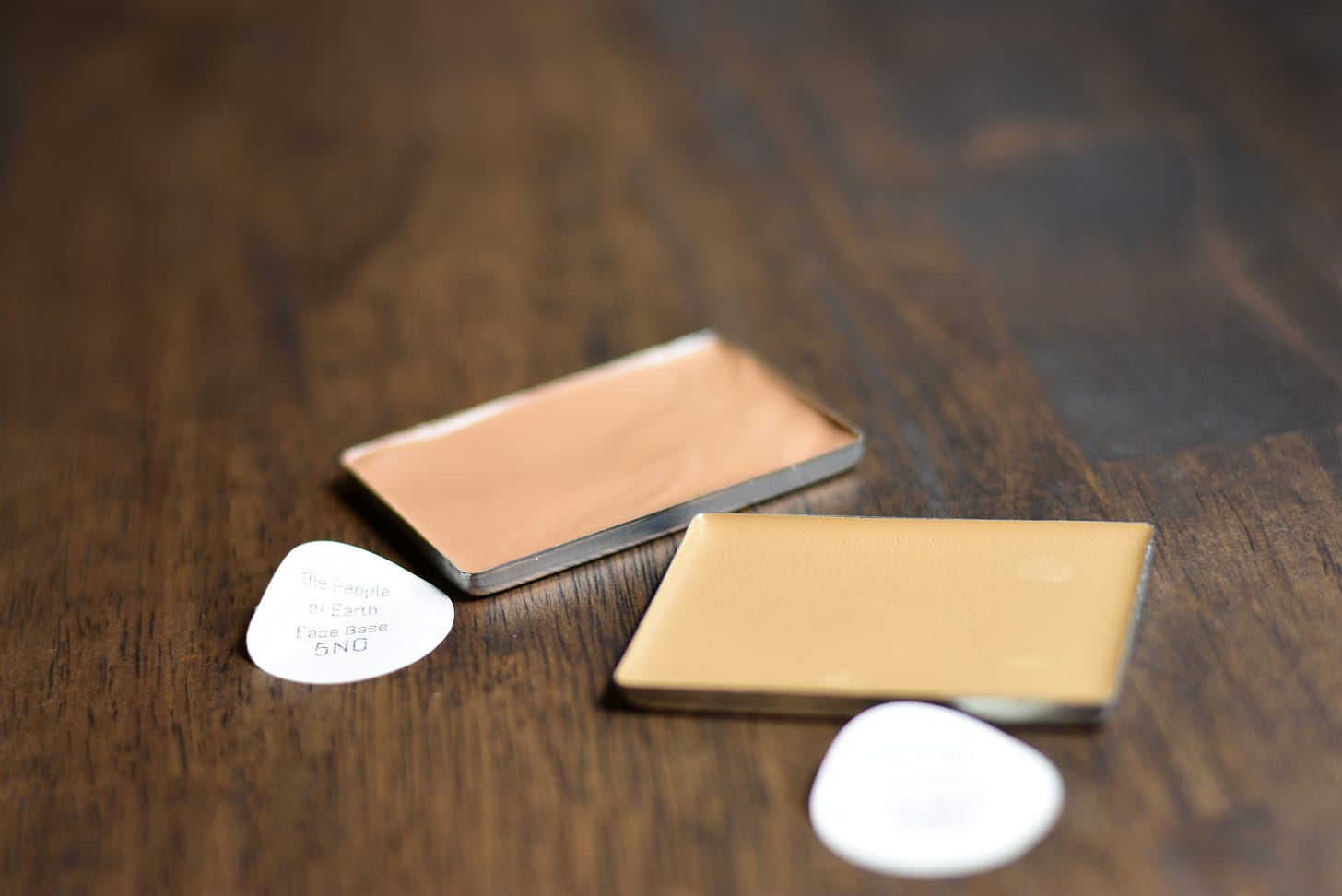
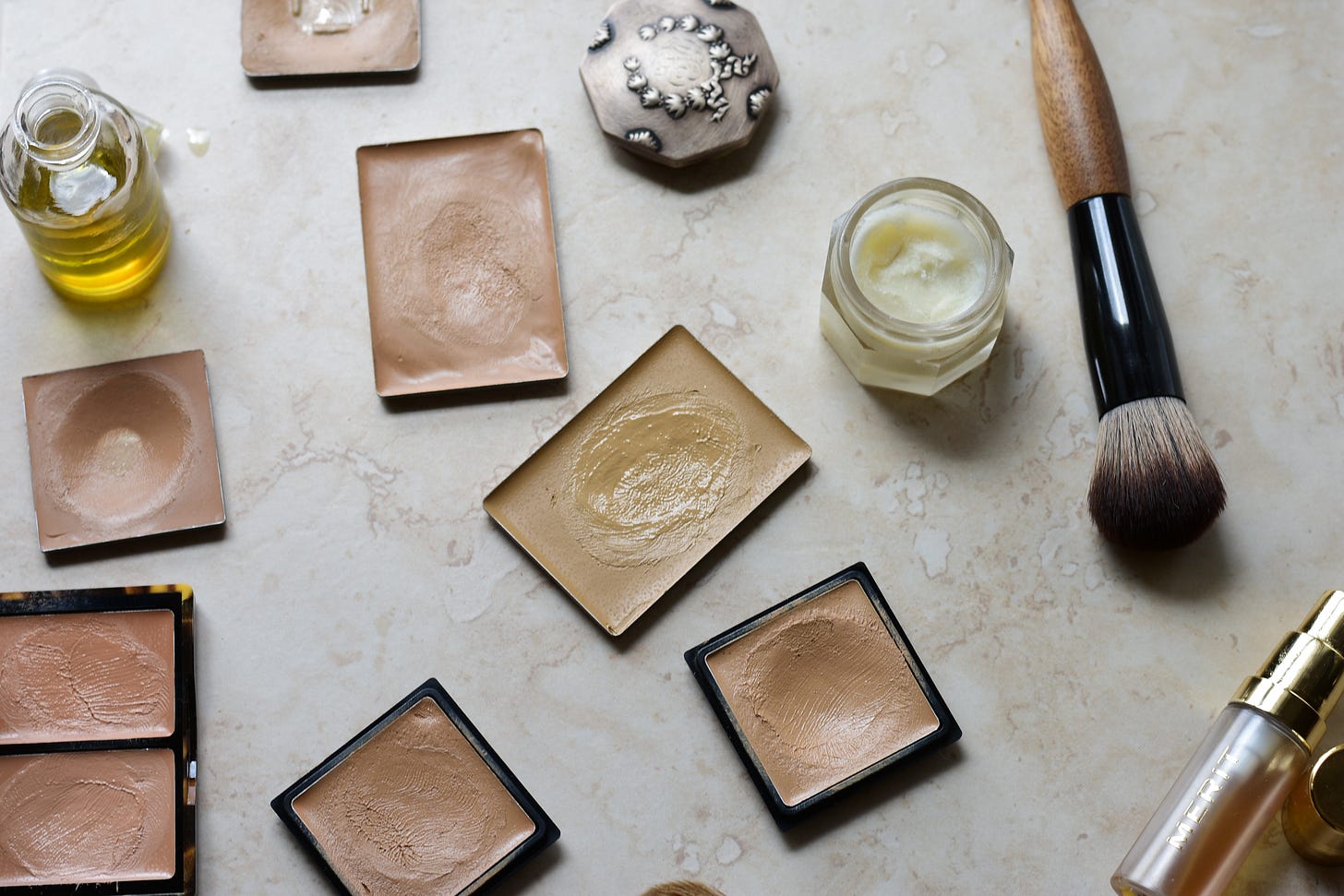
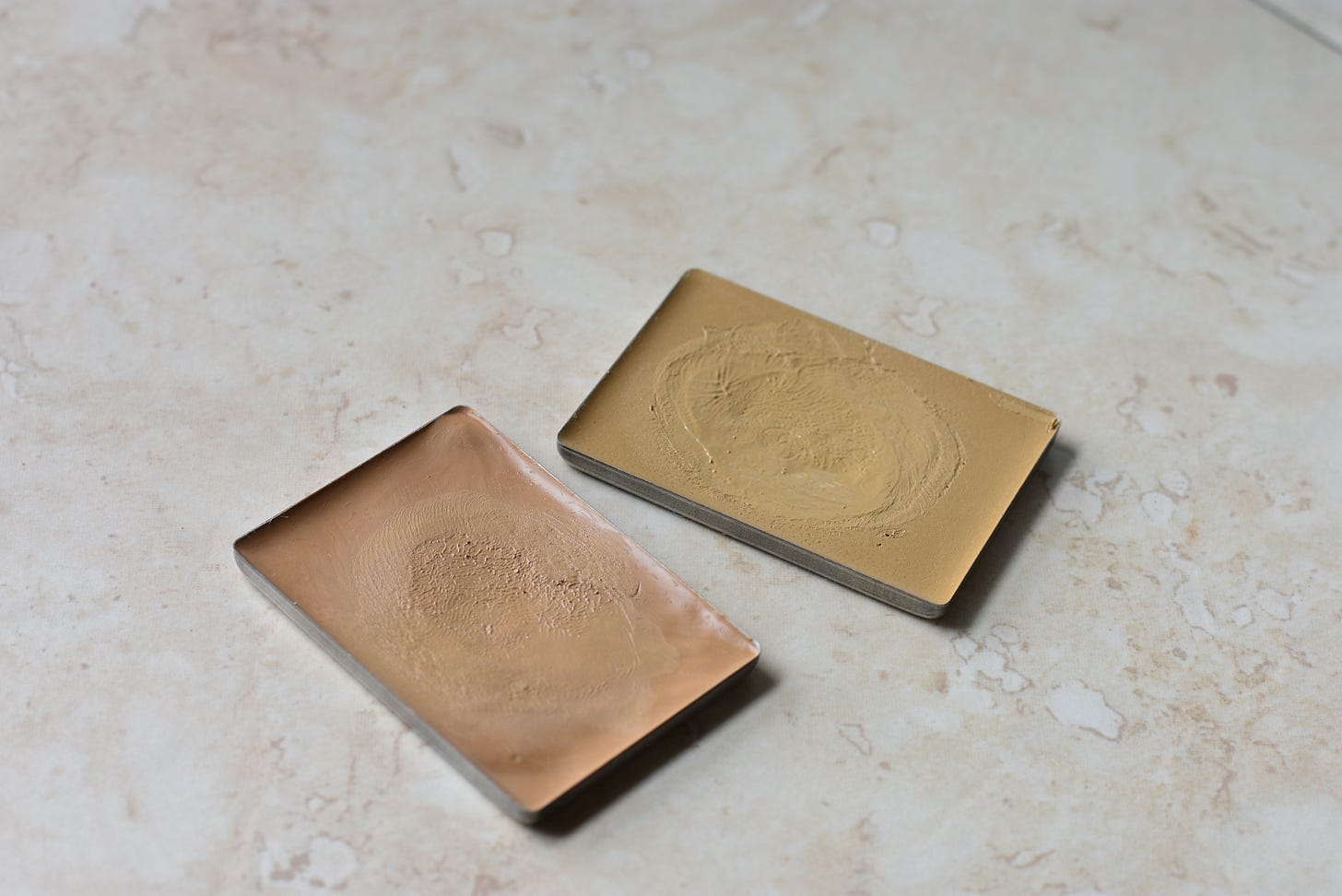

Thanks for sharing. I wonder if they ship to Europe.